By this time, most of our readers have become accustomed to Intel’s Socket LGA 3647 motherboards, be it single socket or dual socket systems. It has been rather simple to decide on a choice of heat sinks for these new systems; passive heatsinks with no fans that rely on the servers cooling fans usually located at the front or active heatsinks that include a fan to help bolster cooling.
In the lab, we have used many types but settled in with Dynatron B5 and B11 coolers as they seem to have an edge with better cooling performance and do not make an outrageous amount of noise.
With a coming review, we did not think much about heatsinks and figured we would just install our CPU’s which were premounted to our Dynatron B5’s and away we would go. In this case, we ran into our first LGA 3647 Square Socket which had us look elsewhere for a proper cooling.
Exploring Narrow v. Square ILM for LGA 3647
The previous generation Intel Xeon E5 V1-V4 CPUs were essentially square packages. STH has a popular article, Narrow ILM v. Square ILM LGA2011 Heatsink Differences that we published in 2012 on the subject. In the context of the Intel Xeon E5 generation, the square chips made both the square and narrow ILM options useful in their respective scenarios. With the latest generation of Intel Xeon Scalable products, the CPU packages are larger and more rectangular so the industry has largely standardized on a single form factor.
Here we see what is perhaps the most common LGA 3647 socket, the Narrow ILM version. These sockets take up a rather large area of the motherboard real estate. We find these sockets on both server and workstation motherboards.
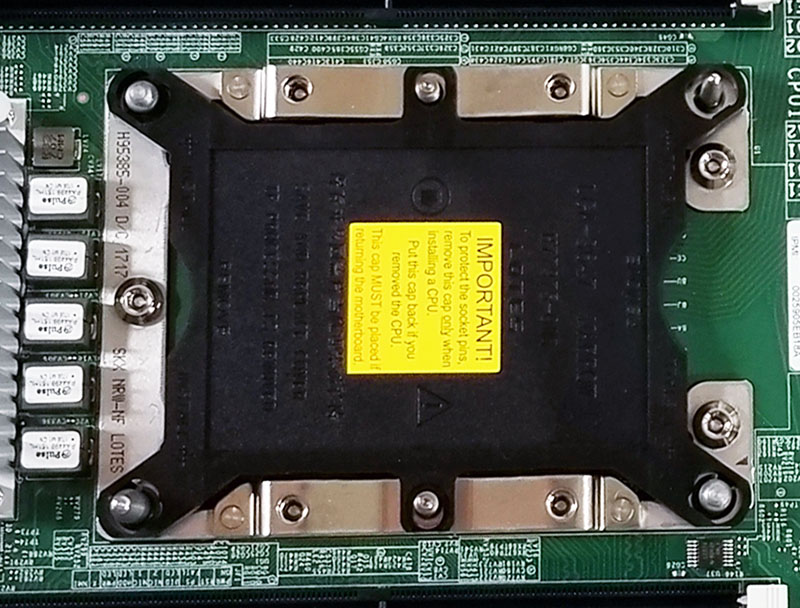
Note that the frame which is bolted down to the motherboard has mounting posts in each corner and approximates the actual size of the Narrow ILM heatsink.
Next up, the Square ILM Socket.
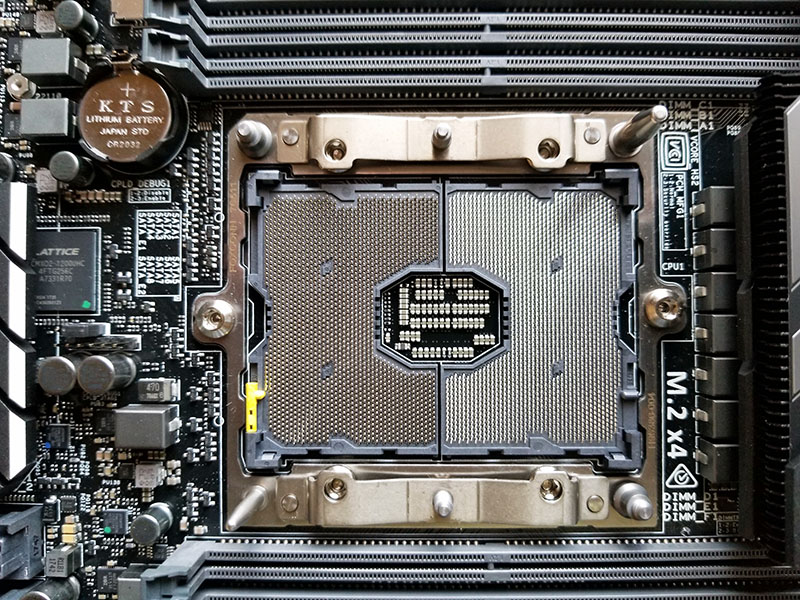
Here we see that the difference between the Narrow and Square sockets is the length of the socket. The square socket is useful when motherboard space is tight as it takes significantly less room.
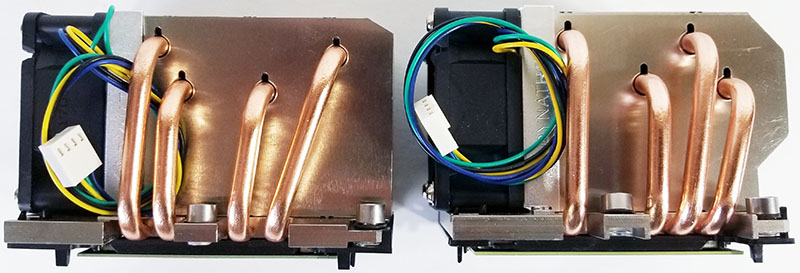
Taking a look at Dynatron LGA 3647 B5 on the left and LGA 3647 B13 on the right we see a different heat pipe layout on the B13, and it is about 0.625” shorter than the B5.
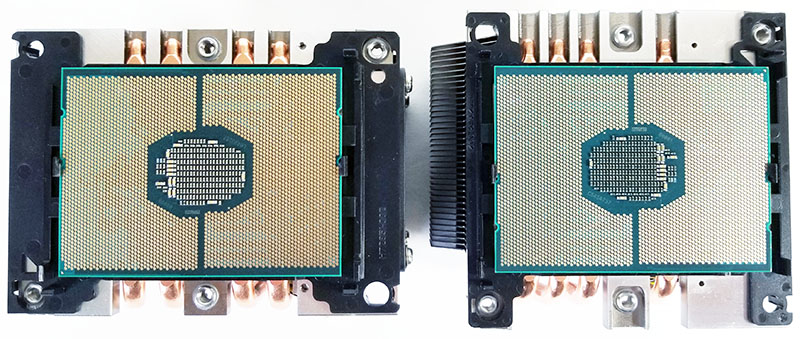
Mounting CPU’s to our heatsinks, we see the LGA 3647 narrow is clearly longer than the square version. However part of the cooling fins on the B13 Square, do extend over the edge of the heatsink.
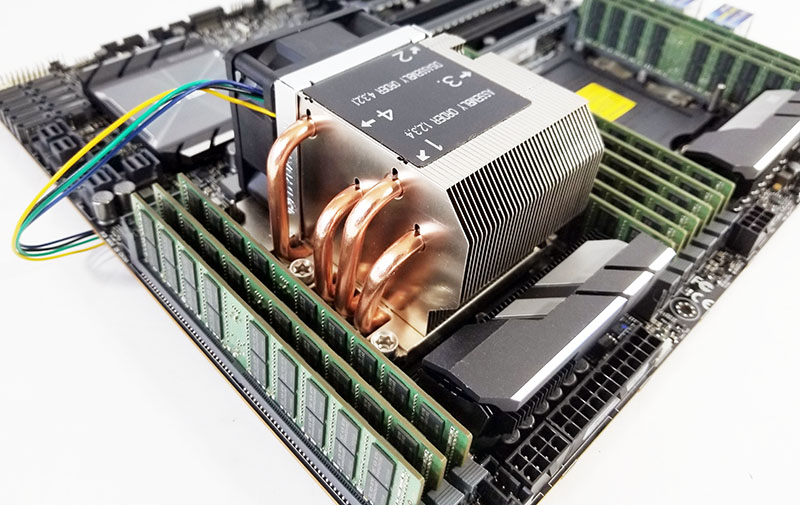
Mounting the Dynatron B13 Square heatsink is the same as the Narrow, secure the numbered screws in the order from 1 to 4. The slight cooling fin overhang fits the VRM heatsinks on our ASUS WS C612E SAGE motherboard with plenty of clearance for air flow.
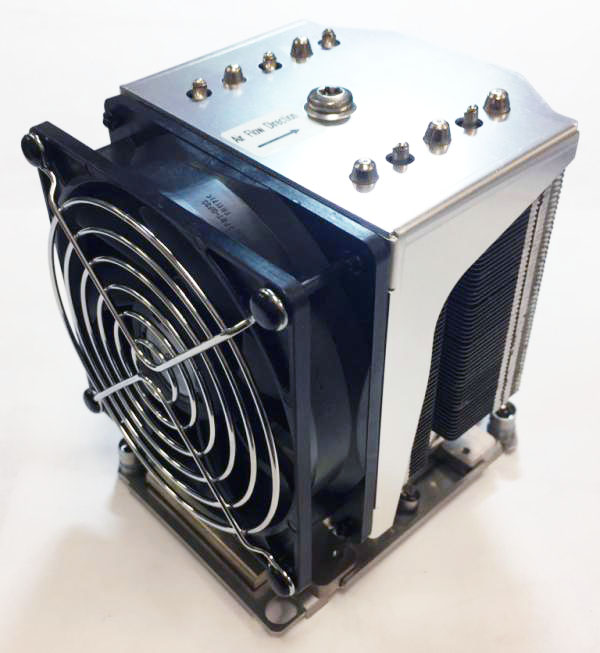
At the time of writing this piece, there is not a lot of choices for heatsinks on Socket LG3647. The list gets even smaller if you are setting up a large workstation that could use 4U heatsinks. In fact, we could only find one 4U active heatsink, and that is Supermicro’s SNK-P0070APS4, which is an LGA 3647 Narrow.
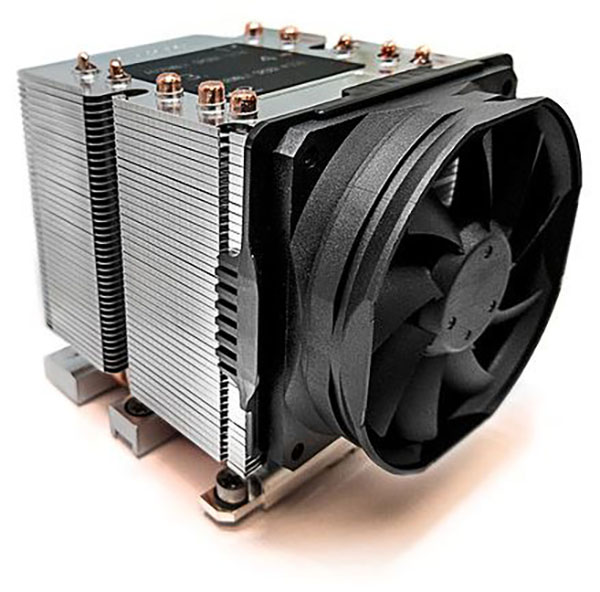
Another choice and perhaps easier to get is a Dynatron B14. The B14 is a 3U active heatsink which uses an 80x80x25mm cooling fan. The air-flow on the B14 goes from the cooling fan to the opposite side, on our ASUS WS C612E SAGE we have a graphics card installed in the first PCIe slot, this would put the B14’s cooling fan very close to the GPU and might restrict air-flow.
Final Words
As we can see, heatsink choices for LGA 3647 sockets are rather limited at this time. We cannot find enthusiast style heatsinks for this socket that are designed for ultimate noise reduction. Part of that is clearly the influence of so few motherboards using the square ILM in this generation. For server buyers, the good news is that the narrow ILM is the go-to option for virtually every server on the market. For workstation users that want a lower-noise solution, if the motherboard supports a square ILM, there will be fewer options available.

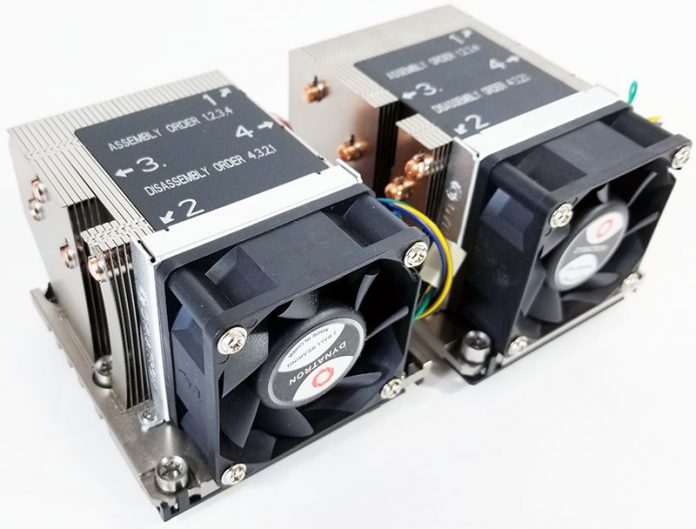



Meanwhile Epyc and TR are the same socket which means you have three sizes of noctua heatsinks (92/120/140mm fans) and even some dedicated AIO/CLC radiators to choose from.
Aluminum – for the standard narrow ILM there are a ton of cooling options. For the square ILM there are very few vendors making platforms with that form factor.
What about for the Xeon Phi x200 chips? It seems that socket is slightly larger than the narrow ILM.
terry – the Xeon Phi x200 is physically the same size chip, but the notches are different on the socket. The cooling options are different as well. In that case, you can look for Xeon Phi solutions. More realistically, you will look for specific heatsinks for the system you purchase as there are fairly specific thermal considerations with Phi.
The Xeon Phi x200 was originally supposed to be socket compatible with Xeon Scalable. Had that happened, this would have been much different.
how abou intel bxsts300c heat sink
I cant find info for what kinda(pin) ddr4 for asus sage 621
Can a square ILM heatsink be installed on a narrow ILM CPU?
I was thinking can noctua nhd-15s and Intel Xeon E5-2697v3 work together?
Thanks a lot
The CPU can be used with either. The heatsink and motherboard mounting must match as either narrow+narrow or square+square